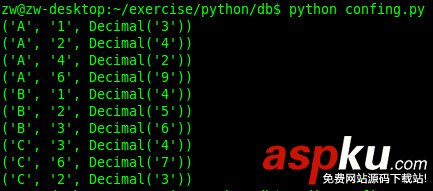我们先来看一个例子:
#encoding=utf-8 # #by panda #桥接模式 def printInfo(info): print unicode(info, 'utf-8').encode('gbk') #抽象类:手机品牌 class HandsetBrand(): soft = None def SetHandsetSoft(self, soft): self.soft = soft def Run(self): pass #具体抽象类:手机品牌1 class HandsetBrand1(HandsetBrand): def Run(self): printInfo('手机品牌1:') self.soft.Run() #具体抽象类:手机品牌2 class HandsetBrand2(HandsetBrand): def Run(self): printInfo('手机品牌2:') self.soft.Run() #功能类:手机软件 class HandsetSoft(): def Run(self): pass #具体功能类:游戏 class HandsetGame(HandsetSoft): def Run(self): printInfo('运行手机游戏') #具体功能类:通讯录 class HandsetAddressList(HandsetSoft): def Run(self): printInfo('运行手机通信录') def clientUI(): h1 = HandsetBrand1() h1.SetHandsetSoft(HandsetAddressList()) h1.Run() h1.SetHandsetSoft(HandsetGame()) h1.Run() h2 = HandsetBrand2() h2.SetHandsetSoft(HandsetAddressList()) h2.Run() h2.SetHandsetSoft(HandsetGame()) h2.Run() return if __name__ == '__main__': clientUI(); 可以总结出类图是这样的:
所以,桥接模式的概念在于将系统抽象部分与它的实现部分分离,使它们可以独立地变化。
由于目标系统存在多个角度的分类,每一种分类都会有多种变化,那么就可以把多角度分离出来,让它们独立变化,减少它们之间的耦合。
下面我们再来看一个实例:
基本原理请参考相关书籍,这里直接给实例
假期旅游 从目的地角度可以分为 上海和大连,从方式角度可以分为跟团和独体
桥接模式把这两种分类连接起来可以进行选择。
类图:
# -*- coding: utf-8 -*-######################################################## # tour.py# Python implementation of the Class DaLian# Generated by Enterprise Architect# Created on: 11-十二月-2012 16:53:52# #######################################################from __future__ import divisionfrom __future__ import print_functionfrom __future__ import unicode_literalsfrom future_builtins import * class TravelForm(object): """This class defines the interface for implementation classes. """ def __init__(self, form="stay at home"): self.form=form pass def GetForm(self): return self.form pass passclass Group(TravelForm): """This class implements the Implementor interface and defines its concrete implementation. """ def __init__(self, form="by group"): super(Group,self).__init__(form) pass passclass Independent(TravelForm): """This class implements the Implementor interface and defines its concrete implementation. """ def __init__(self, form="by myself"): super(Independent,self).__init__(form) passclass Destination(object): """This class (a) defines the abstraction's interface, and (b) maintains a reference to an object of type Implementor. """ m_TravelForm= TravelForm() def __init__(self, info): self.info=info pass def GetInfo(self): # imp->Operation(); return print(self.info + " " +self.form.GetForm()) pass def SetForm(self, form): self.form=form passclass DaLian(Destination): """This class extends the interface defined by Abstraction. """ def __init__(self, info="Go to DaLian "): super(DaLian,self).__init__(info) passclass ShangHai(Destination): """This class extends the interface defined by Abstraction. """ def __init__(self, info="Go to ShangHai"): super(ShangHai,self).__init__(info) pass#客户端if(__name__=="__main__"): destination=ShangHai() destination.SetForm(Group()) destination.GetInfo() destination=DaLian() destination.SetForm(Independent()) destination.GetInfo()
运行结果






















